August 28, 2025, Sta. Rosa — As the Philippines races to meet its 35% renewable energy target by 2030, solar industry leaders said regional support for clean energy innovation will be critical in translating national renewable energy targets into on-ground adoption.
This was highlighted through back-to-back Solar Community Meetups hosted by New Energy Nexus Philippines in Cebu City and Sta. Rosa, Laguna, on August 20 and 28, respectively. Both events convened key government officials, utilities, financiers, and solar entrepreneurs.
Consisting of panel and breakout discussions among the participating stakeholders, the Solar Community Meetup not only surfaced challenges in both Central Visayas and CALABARZON, but also brought out insights and solutions to address these gaps.
“By connecting solar entrepreneurs with potential clients, facilitating dialogues between LGUs and utilities, and offering capacity-building programs tailored to local needs, we’re ensuring that solar adoption doesn’t happen in silos. Instead, it’s driven by a collaborative ecosystem where innovation, financing, and policy support move in sync. That’s the unique role New Energy Nexus fills,” said Jacob Taguinod, Partnerships Manager at New Energy Nexus Philippines.
The two regions have made significant progress in solar adoption, from Cebu hosting the country’s first floating solar project to CALABARZON rapidly scaling rooftop installations across factories, malls, and municipal buildings. However, this momentum is slowed by common challenges: cumbersome net metering processes, supply chain constraints, and consumer concerns over unaccredited installers.
Reforms are starting to take shape. Cebu officials are committing to streamlined permitting, while in CALABARZON, MERALCO has begun improving interconnection procedures.
“One of our priorities at the DOE is to ensure that national renewable energy policies are effectively implemented at the local level. In regions like CALABARZON, this means working closely with LGUs to strengthen permitting guidelines, and with utilities to make net metering more accessible,” said Edward V. Neri, OIC-Division Chief at the Department of Energy – Solar Energy Management Division.
“We are committed to making the interconnection process simpler and clearer for our customers who want to adopt solar. Through initiatives like net metering and distributed energy resources (DER), we aim to empower consumers to become prosumers while ensuring that every installation is safe, reliable, stable, and sustainable for the grid. By working hand-in-hand with local governments, solar installers, and industry partners, we can accelerate rooftop solar adoption across CALABARZON,” said Engr. Botany KC Anne Sevilleja-Briones, Executive Assistant to the Chief Revenue Officer at MERALCO.
“To make the solar adoption easier, Cebu City will ensure, with the new administration, that the Office of the Building Official streamlines net metering requirements by minimizing red tape,” said Cebu City Councilor Joel Garganera. “Cebuanos should expect changes that will make the process faster and simpler, with more incentives for those who choose renewable energy.”
Civil society groups such as the Clean Energy Advocates Association of the Philippines (CEAAPI), which was formed as a result of previous Solar Community Meetups, and the Philippine Solar and Storage Energy Alliance (PSSEA) are also pushing to raise industry standards and build consumer confidence.
Meanwhile, solar installers highlighted that stronger policy support at both the national and regional levels is critical to accelerating adoption.
“Beyond financing and market competition, installers face challenges from unclear or inconsistent implementation of standards. Stronger national and regional policies that enforce safety and quality, while supporting accredited practitioners, will raise industry standards and protect the installers and consumers,” said Bernard Torralba, Owner of Solar Hyperion, a solar installation company.
New Energy Nexus builds ecosystems that enable clean energy entrepreneurs, including those in the solar business, to scale their solutions in the Philippines and beyond. The Solar Community Meetups are part of its ongoing programs backing the country’s solar industry — more information can be found here.
Dayther Manubag, Communications Lead, New Energy Nexus Philippines, dayther.manubag@newenergynexus.com (based in Mandaluyong City)
Maverick Flores, Senior Content Producer, New Energy Nexus, maverick.flores@newenergynexus.com (based in Quezon City)
About New Energy Nexus
New Energy Nexus (NEX) is an international organization that strives towards a 100% clean energy economy for 100% of the population. It does this with a laser focus on diverse entrepreneurs, supporting them with accelerators, funds, skills, and networks they need to thrive. NEX has accelerated 1,500+ startups, empowered over 10,400+ entrepreneurs, and mobilized over US$4.7 billion in investment. Since its founding in California in 2004, NEX now operates programs or advisory services in Australia, China, India, Indonesia, Nigeria, Pakistan, the Philippines, Thailand, the UAE, Uganda, the USA (California and New York), and Vietnam.
Cebu City, Philippines, 20 August 2025 — Clean energy leaders revealed how Cebu City is an emerging hub for solar energy at a convening today of government and industry leaders, highlighting the massive potential to scale if financing, supply chain constraints, and bureaucratic delays in net metering are addressed.
“Our [New Energy Nexus Philippines] goal is not just to convene, but to strengthen the solar community by helping set standards, address bottlenecks, and connect stakeholders across the value chain. What we saw in this meetup is that Cebu has the workforce, demand, and commitment—it just needs the right ecosystem support. That’s where NEX Philippines comes in.” said Sheryl Estella, Academy Manager of the New Energy Academy, a learning platform for clean energy professionals and entrepreneurs – powered by New Energy Nexus, GSES, and OpenSolar.
Key leaders in government, utilities, finance, and the local solar industry came together for New Energy Nexus Philippines’ Solar Community Meetup, its second run in the city. The event included panels and breakout discussions on scaling the local clean energy economy and the adoption of renewables in the Central Visayas.
The region’s solar landscape has seen promising yet modest growth over the past few years. Notably, Visayas now hosts around 472 MW of rooftop solar capacity, according to the Institute for Climate and Sustainable Cities’ SPECTRUM platform, which is still only a fraction of the Philippines’ total potential. Cebu Province is also home to pioneering projects such as the country’s first megawatt-scale floating solar facility in Toledo City – which has a capacity of nearly 5 MW. Meanwhile, battery storage integration is starting to emerge, while interest from households and SMEs continues to grow.
Despite this momentum, barriers persist. A recent report highlighted challenges such as high upfront costs, limited financing access, bureaucratic delays in net metering, and supply chain constraints, which threaten to slow down solar adoption across the country.
“To make the solar adoption easier, Cebu City will ensure, with the new administration, that the Office of the Building Official streamlines net metering requirements by minimizing red tape. Cebuanos should expect changes that will make the process faster and simpler, with more incentives for those who choose renewable energy,” said Cebu City Councilor Joel Garganera.
One solution is the formation of the Clean Energy Advocates Association of the Philippines (CEAAPI), which emerged from the 2024 Solar Community Meetup in Cebu City. CEAAPI is a network of installers, service providers, and advocates working together to accelerate clean energy adoption in the region. By promoting certifications, transparency, and quality standards, the organization also helps address the growing issue of fly-by-night installers and low-quality systems that undermine consumer zhetrust. CEAAPI is also the official hub partner for the 2025 run.
This year’s meetup comes at a pivotal moment, with a large-scale floating solar project starting in the city and local government buildings being upgraded to solar. Establishing strong relationships between the solar industry, local government, and other key stakeholders can be a powerful catalyst for solar adoption – streamlining permitting processes, improving access to financing programs, and integrating solar into public infrastructure plans.
New Energy Nexus Philippines is set to conduct another SCM in the CALABARZON Region on August 28, part of their ongoing and future programs equipping the local solar community with the tools to scale their solutions. More information can be found here.
Dayther Manubag, Communications Lead, New Energy Nexus Philippines. dayther.manubag@newenergynexus.com (based in Mandaluyong City)
Maverick Flores, Senior Content Producer, New Energy Nexus. maverick.flores@newenergynexus.com (based in Quezon City)
About New Energy Nexus
New Energy Nexus (NEX) is an international organization that strives towards a 100% clean energy economy for 100% of the population. It does this with a laser focus on diverse entrepreneurs, supporting them with accelerators, funds, skills, and networks they need to thrive. NEX has accelerated 1,500+ startups, empowered over 10,400+ entrepreneurs, and mobilized over US$4.7 billion in investment. Since its founding in California in 2004, NEX now operates programs or advisory services in Australia, China, India, Indonesia, Nigeria, Pakistan, the Philippines, Thailand, the UAE, Uganda, the USA (California and New York), and Vietnam.

Antora thermal battery on a crane.
Antora Energy is no longer a startup to watch; it’s a force to be reckoned with in the race to onshore American manufacturing and decarbonize industry. But before it raised $150 million in Series B funding, partnered with industrial giants, or landed on the pages of Fast Company and The Wall Street Journal, Antora was an early-stage startup facing a very familiar challenge: proving that the tech worked.
Back in 2019, that’s where CalSEED stepped in.
Antora’s core innovation is a thermal battery system that stores renewable energy as heat in inexpensive, earth-abundant materials. While Antora’s first product outputs that energy as industrial heat to drive manufacturing processes, its second product will also convert that heat back into electricity using thermophotovoltaic (TPV) cells. These cells function like solar cells designed to capture the wavelengths of light from Antora’s glowing-hot carbon blocks inside the battery.
This approach unlocks cost-effective, long-duration energy storage—the solution California and other clean energy leaders need to power the industry and ensure grid reliability as they deploy more intermittent energy resources, such as wind and solar.
But when Antora applied to CalSEED, the concept was still early. The company needed to prove that its TPV cells could reliably deliver electricity at the required efficiency, durability, and scale.
With support from the CalSEED Concept and Prototype awards, Antora conducted critical engineering validation and reliability testing of its TPV technology.
Throughout the grant in 2019, Antora:
This work helped establish that Antora’s TPV technology could convert heat to electricity at efficiencies of 40%+ and operate under extreme conditions with minimal degradation. More importantly, it laid the foundation for scaling production and building investor confidence.
“The work of this project, including the thousands of hours of reliability that have already been demonstrated, has greatly de-risked the commercial viability of TPV in long-duration energy storage.”
— Antora Energy, CalSEED Final Report
Since completing the CalSEED project, Antora has:
The company’s technology is now seen as a leader in powering industry with clean, low-cost energy. Antora’s batteries can keep industry running 24/7, even during extreme heatwaves and wildfire shutdowns.
Thermal energy storage, like Antora’s, could save California $1.5 billion annually, improve grid reliability, and reduce 25 million metric tons of CO₂ annually. That’s equivalent to taking nearly 6 million cars off the road. [Source]
And it all started with a prototype.
Antora’s success is a textbook example of how CalSEED helps bridge the “valley of death” for climate tech startups—de-risking early innovations, validating performance, and clearing the path from lab to market.
Every major clean energy company was once a concept seeking support. Antora’s journey demonstrates that targeted, early-stage funding and validation programs, such as CalSEED and CalTestBed, make the difference between promising ideas and scalable solutions.
Antora is now powering toward a clean future, and CalSEED helped light the way.
This story was originally posted by CalSEED.fund, our program in California.
Ten pioneering startups from across the lithium battery value chain presented their vision of Australia’s battery sector to an engaged audience of investors, policymakers, and industry participants at the inaugural Supercharge Australia Incubator Pitch Day.
After three months of tailored support from EnergyLab and New Energy Nexus, these founders now stand poised to accelerate the country’s battery manufacturing capabilities – with solutions ranging from raw material innovation, marine applications, embedding safe energy storage into our living spaces, to cell reuse and repair.
Here are the participating startups and their lithium battery value chain focus:
The completion of the first Incubator marks a key milestone in Supercharge Australia’s broader mission – to support over 150 startups in the lithium battery value chain and catalyse a thriving, interconnected lithium battery innovation sector – by adding a second program focused on supporting earlier-stage startups. The new program provided mentorship, expert advice, pilot opportunities, early customer connections, investor engagement, and international exposure, helping the teams to build the foundations of Australia’s battery future. We thank all of the experts for their generous contributions.
Launched in 2022, Supercharge Australia has now completed two Innovation Challenges. With the addition of the Incubator, it is now supporting 31 startups that have raised over AU$71 million in funding since they participated in its programs.
Australia has a generational opportunity to move beyond exporting lithium ore and build a competitive, homegrown battery value chain. The startups in this year’s Incubator show how this is already taking shape: connecting technologies across the life cycle of a battery, from production to application to reuse. Their innovations don’t just solve isolated problems; they strengthen each link in the chain, multiplying impact along the chain to make the entire system cheaper, cleaner, and more efficient. This is how Australian batteries can compete.
Together, they demonstrate what a circular, high-value battery ecosystem could look like:
With coordinated support, these early-stage innovations can accelerate Australia’s transition from resource supplier to battery technology leader.
Australia remains the world’s leading lithium producer, supplying over one-third of global demand. With the global lithium battery market still forecast to be significantly undersupplied by 2030, Australian producers are seeking efficiency improvements and are investing in downstream opportunities to secure vertical capacity and greater profitability.
Each startup in the Incubator cohort is developing a critical piece of the emerging ecosystem and the kinds of investment opportunities the sector is seeking. Their solutions highlight the scale of opportunity when early-stage innovation is backed with intent, speed, and coordinated support.
While early traction for the cohort members was strong – from prototypes to paid pilots – the startups were all facing the same uphill challenge: securing capital, facilities, and support to go from validated concepts to scalable commercial impact. The Incubator addresses this gap by de-risking particularly early innovation, reducing barriers to commercialisation, and helping Australia retain its battery IP rather than lose it offshore.
As global warming trends continue toward a 3°C pathway, and the risks of overshoot, consequent tipping points, and heavy reliance on unproven carbon capture and storage technologies rise, building a high-functioning cleantech sector that can dramatically accelerate decarbonisation becomes a strategic, global imperative.
Batteries power the clean energy transition, making it an important piece of this response – and battery startups have tremendous potential to pave the way, especially when supported early.
To further develop this economic opportunity, Australia can adopt proven models like our CalTestBed program in California, which turned US$22 million in early-stage testing access into over US$438 million in follow-on investment by offering non-dilutive, non-matching grants to startups solving big climate problems. If a similar system were applied here, it would rapidly increase the volume and readiness of battery startups ready to attract private capital or integrate into gigafactory supply chains.
“Building Australian lithium battery capability begins with supporting innovation at its earliest stages — with non-matched and non-dilutive funding to produce prototypes, pilots and real-world testing opportunities,” said Kirk McDonald, Project Manager at Supercharge Australia.
Australia has a generational opportunity to do the same: Supercharge Australia is calling for new initiatives to:
To continue building the momentum for this sector, our next program is launching now. This will be our third Supercharge Australia Innovation Challenge – applications are open.
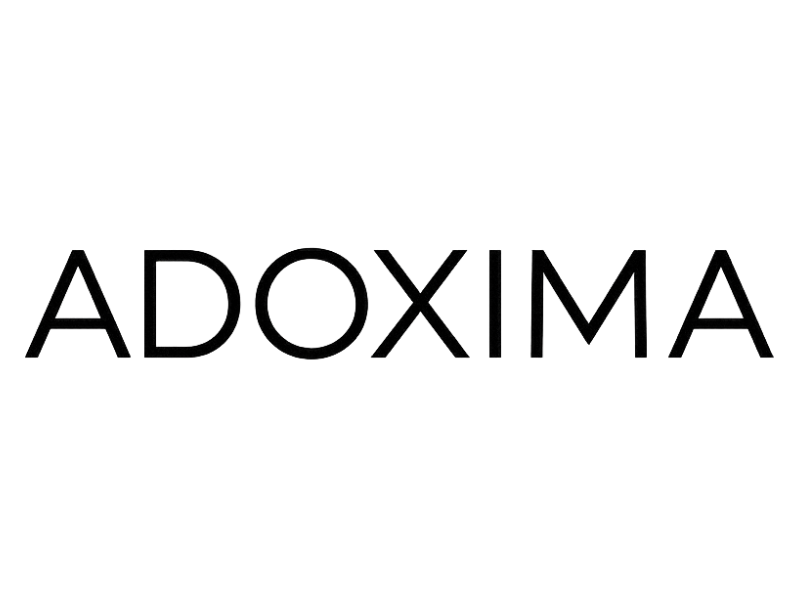
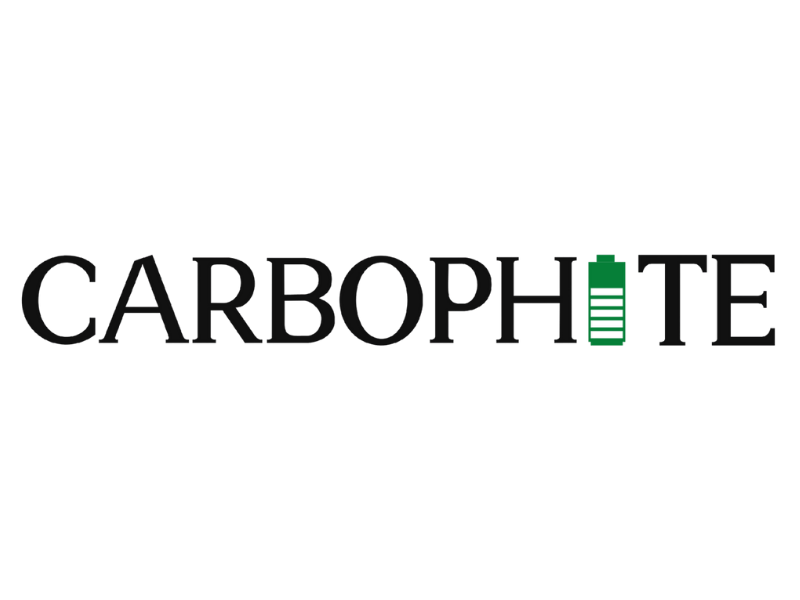
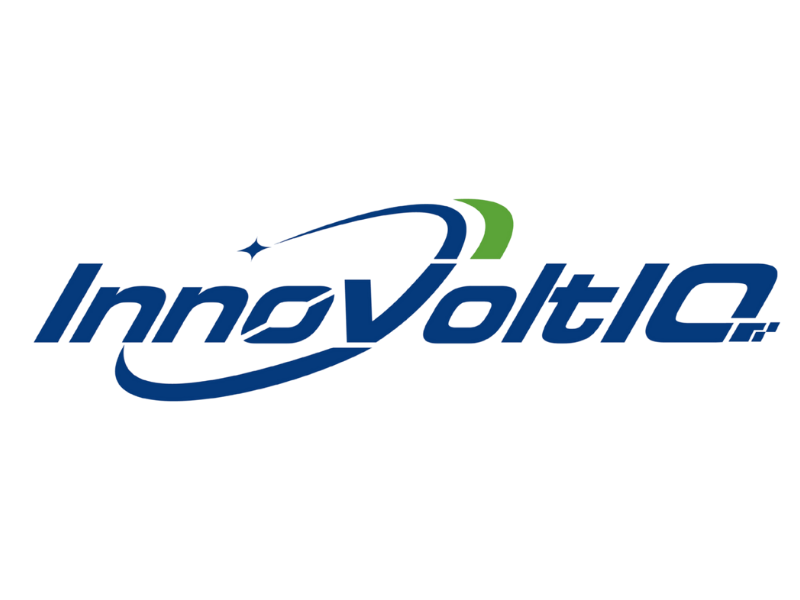

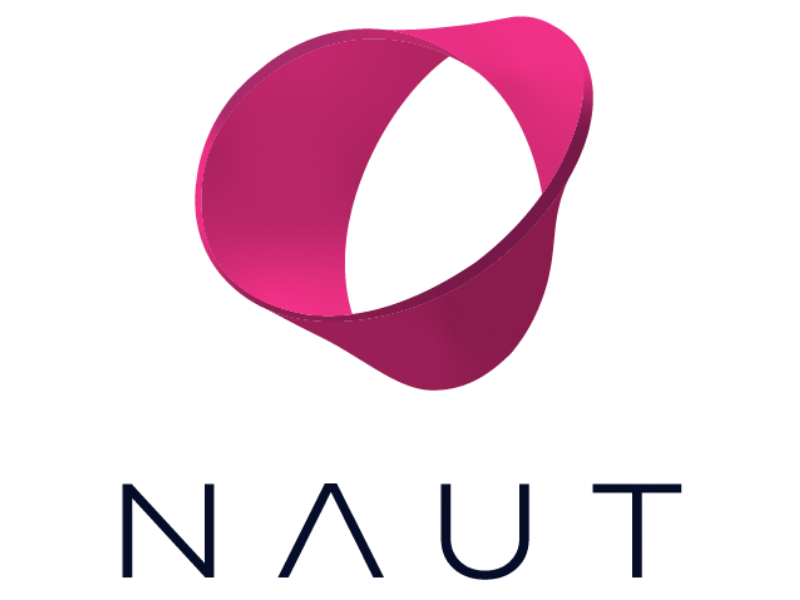
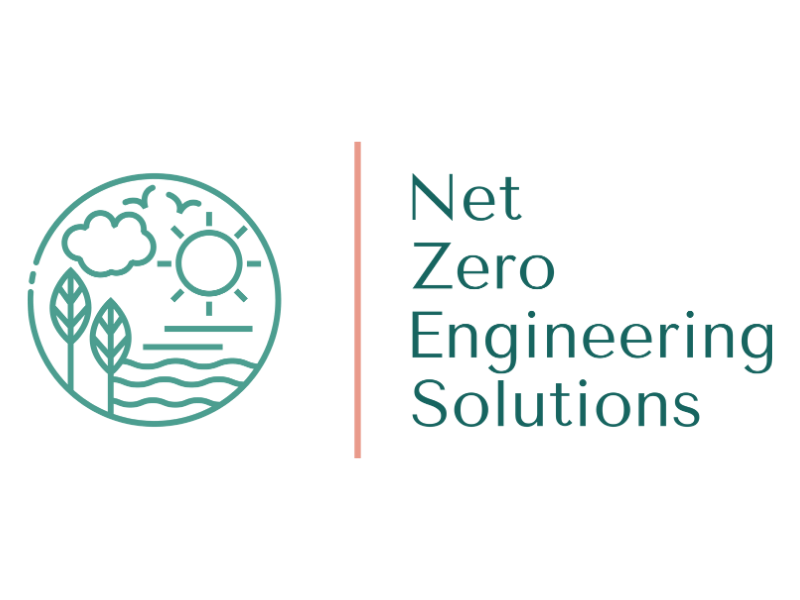
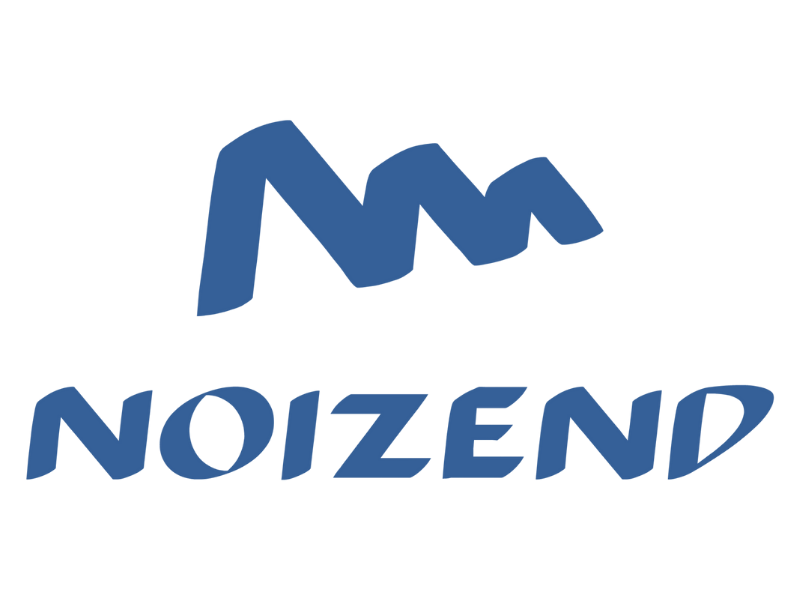
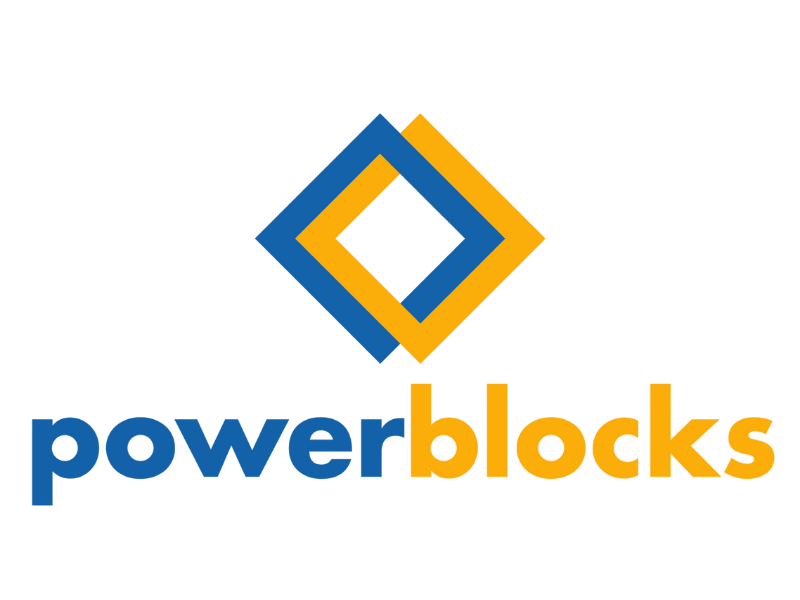
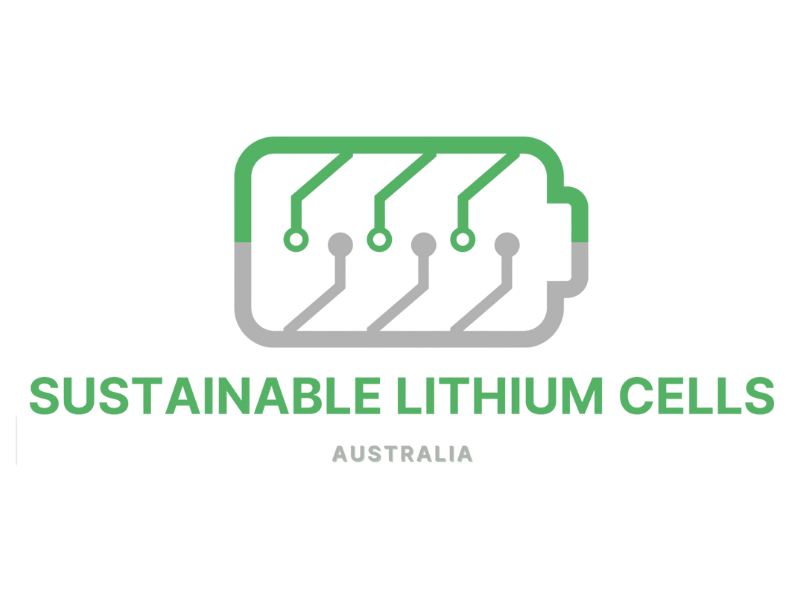
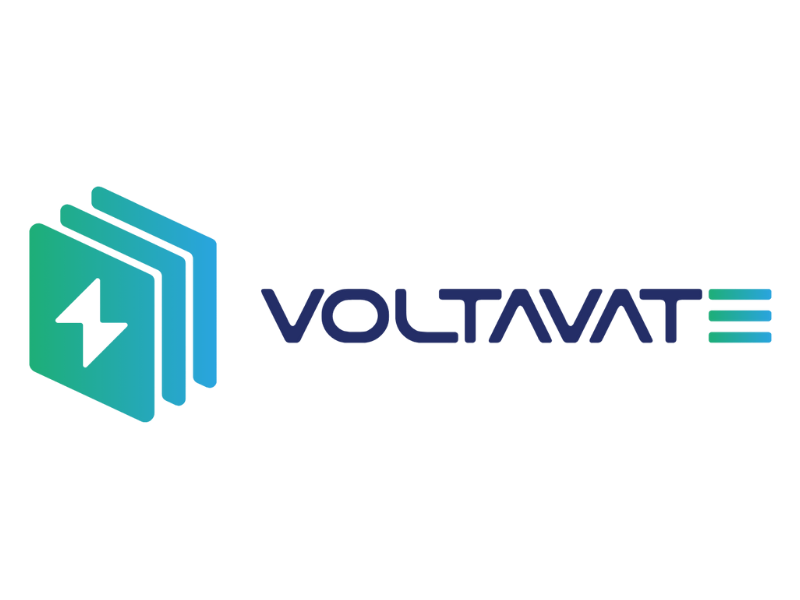

Rooftop solar panel. Stock photo
A recent study by Ateneo de Manila University, published in Challenges in Sustainability, sheds light on the persistent barriers preventing the widespread adoption of rooftop solar power (RTSP) in Metro Manila and nearby provinces. Led by Professor Rosalina Palanca-Tan, the study surveyed 403 respondents to understand why households remain hesitant to invest in solar technology despite its clear economic and environmental benefits.
The study’s findings were recently featured in the Philippine Daily Inquirer, sparking a public discussion on its Facebook post, which highlighted several recurring concerns: high upfront costs, lengthy return on investment (ROI) periods, bureaucratic hurdles, technical challenges, and a lack of government support. Let’s look into the key challenges raised around rooftop solar adoption, and explore potential solutions.

A word cloud generated from people’s responses on the Facebook post.
1. High cost of installation and ROI concerns
Many consumers cited the high initial cost of installing solar power systems as a major barrier. The upfront investment often matches several years’ worth of electricity bills, making it difficult for households to justify the expense. Additionally, long return-on-investment (ROI) periods discourage adoption, particularly in the absence of accessible financing options.
2. Lack of financing options
Access to financing remains a significant barrier to rooftop solar adoption. With limited options for low-interest loans or flexible payment schemes, households struggle to afford the initial investment, making solar installations less accessible to the broader public, especially to residential consumers.
3. Regulatory and bureaucratic hurdles
The slow and complex application process for net metering was another major concern. Many consumers reported waiting over six months and encountering excessive requirements that hindered their ability to connect their solar systems to the grid.
4. Service and maintenance issues
Some consumers highlighted issues related to improper system sizing, inefficiency, and high maintenance costs. Concerns included roof leaks due to poor installation, the lifespan of batteries, and the disposal of solar panels. These barriers make the transition to solar more challenging for prospective users.
5. Quality of solar technologies & local manufacturing
The absence of local solar manufacturers results in reliance on expensive imported components. Concerns about substandard or inefficient technologies make consumers hesitant to invest.
6. Lack of government support and incentives
Unlike countries such as Australia and Canada, which offer tax breaks, subsidies, and no-interest loans, the Philippine government provides minimal financial incentives for residential RTSP. This lack of support further discourages households from making the switch to solar energy.
7. Limited competition in the market
The industry is still dominated by a few major players, limiting consumer choices and competitive pricing. More players entering the market could drive innovation and lower costs through competition.
At New Energy Nexus Philippines, we recognize that overcoming these barriers requires a multi-faceted approach—one that not only enhances technical expertise but also builds trust within communities. This is why it’s important to empower the solar industry, especially smaller players, with the right tools and knowledge to drive solutions forward. Our programs, particularly the Solar Innovation Program (SIP) and Solar Community Meetups, are designed to do just that.
Strengthening the Solar Industry
SIP provides targeted support for solar PV installers, engineering, procurement, and construction (EPC) companies, and solar equipment suppliers to improve their competitiveness in the market. Through learning sessions and workshops, participants gain essential knowledge in:
By empowering solar entrepreneurs, SIP tackles concerns related to business growth, financing gaps, and limited competition in the market. A stronger and more competitive solar industry ultimately leads to better installation quality, reduced costs, and more accessible financing options for households.

SIP 2024 graduates during the culminating activity in Cebu City.
Building Trust in the Industry
Beyond technical training, shifting public perception is crucial for accelerating RTSP adoption. Our Solar Community Meetups serve as a bridge between solar entrepreneurs, technical experts, policymakers, and consumers by fostering collaboration and knowledge-sharing. These gatherings provide a space for entrepreneurs to exchange insights and share best practices, address bureaucratic challenges with government stakeholders, streamline net metering processes, and advocate for stronger policy support. Additionally, they highlight success stories from early adopters, encouraging more households to consider solar power.
By fostering an ecosystem of collaboration and trust, Solar Community Meetups contribute to addressing skepticism and misinformation surrounding RTSP. The insights gathered from these discussions also help inform future policy recommendations, ensuring that the needs of solar entrepreneurs and consumers are effectively addressed.

DOE Assistant Secretary Mylene Capongcol presenting the Department of Energy’s renewable energy plans at the SCM in Davao.
The concerns raised in the Facebook post reflect the frustrations and aspirations of many Filipinos when it comes to solar energy adoption. While challenges such as high costs, bureaucratic red tape, and technical difficulties persist, programs like the SIP and Solar Community Meetups provide platforms that empower solar entrepreneurs to drive industry-wide improvements.
Panel discussion during the SIP 2024 culmination featuring Hon. Nestor Archival (Cebu City Government), Engr. Titus Ragrario (Jinko Solar), Engr. Richard Alfafara (Visayan Electric Company – VECO), and Engr. Woodrow Pino (Woodrow Solar Power), sharing insights on accelerating rooftop solar adoption. Photo
Ultimately, expanding the adoption of RTSP in the Philippines requires a collective effort from businesses, the government, private companies, and Filipino communities. By equipping solar entrepreneurs with knowledge and resources, and by fostering trust through community engagement, we can create a more inclusive and resilient solar industry that benefits both consumers and the environment.
Want to get more involved in the Filipino clean energy space? Learn more about our programs in the Philippines here.
Australia is charging ahead in the race to build a battery-powered world—and the timing couldn’t be better.
The nation’s growing role in the global battery supply chain took center stage at our recent webinar, Australia’s Time to Charge: Powering the Battery Future. The hour-long session, part of our Just Batteries initiative, explored how battery innovation, mass EV retrofitting, and smart policy could transform Australia into a clean energy powerhouse.
These industry experts led the discussion, held virtually on June 19, 2025:
Why this conversation matters
The battery supply chain is the backbone of the energy transition, and Australia’s unique mix of critical minerals, renewable energy resources, supportive policies, and skilled workforce positions it to lead the way.
This is what we’re backing through Supercharge Australia, a collaboration between New Energy Nexus and EnergyLab. The program aims to support 150+ local startups, empowering them with mentorship, funding pathways, and global connections to expand Australia’s lithium battery value chain.
6 key insights from the webinar
1. Australia’s global opportunity is now
Australia is well-positioned to become a significant player in the battery-powered electrical transformation. Here’s why:
There are signals from state and federal governments that they want to move away from a fossil fuel-based export economy, such as:
2. Mass EV retrofits could boost battery demand 20-fold
Retrofitting existing vehicles—especially commercial fleets—is a faster, cheaper, and lower-carbon way to scale EV adoption. Our second Supercharge Australia Innovation Challenge spotlighted 12 startups electrifying everything from mining trucks to boats.
The current projection of a 65GWh demand for stationary storage by 2030 could be massively higher with mass EV retrofits. Multiplying Australia’s vehicles by their estimated battery capacity, turning half of Australia’s vehicle fleet into EVs could multiply local battery demand 20-fold to over 1.3TWh, enough to justify domestic cell production and build a full onshore value chain (more here).
3. Startups like Veepower are leading the way
Kyle Van Berendonck, founder of Veepower and Retrofit Nation challenge winner, introduced Veepilot: a drop-in EV brain that lets large garages and re-manufacturers, through to individual garages, convert vehicles to electric with professional and supportable software — a key concern of retrofit solutions.
After a tour of California’s thriving clean energy ecosystem with New Energy Nexus, Veepower is now raising AU$500K from climate-focused investors to scale in Australia.
4. Smart policy can unlock big impact
The discussion emphasized the need for policies to support battery retrofits, including:
These interventions could support thousands of upskilled ICE workers (such as mechanics and automotive electricians) and create a more circular, cost-effective battery and transportation economy.
5. Startup support is critical
Through tailored workshops, mentorship, and investor-readiness training, the Supercharge Australia Incubator aims to help founders bridge key gaps in prototyping, lab access, and commercialization. As Kirk McDonald and EnergyLab project lead Derick Gyabeng said in the webinar, early-stage startups need consistent, generous support to grow from an idea to an investment-ready solution.
Moreover, Supercharge Australia is leading a push to bring learnings from California’s best practice startup testing program, CalTestBed, to Australia. As part of the CalSEED-CalTestBed pair offering US$1M in non-matching and non-dilutive support to founders, startups can receive vouchers up to US$300K in value to use at the University of California and National Labs testing facilities across the state.
CalTestBed has supported over 150 startups with $45M in vouchers, with over 40% being received by women and under-represented founders.
6. Australia’s Leadership Can Power the Region
The country’s battery innovation doesn’t stop at its borders. With Southeast Asia on the path to rapid electrification, Australia’s EV retrofitting industry can serve a region set to reach 770 million people by 2050.
Supporting Australia’s battery supply chain at this stage could play a huge role in the region’s clean energy transition.
Why ‘Just Batteries’
Batteries are the linchpin of the clean energy transition. But how we build this industry matters as much as how fast we scale it.
At New Energy Nexus, we believe battery innovation must be just, inclusive, and community-led. Today, the battery supply chain is dominated by a few countries and companies, with little accountability to communities, workers, or the environment. Battery recycling and reuse are underinvested solutions. And left unchecked, the race for minerals and manufacturing could replicate the injustices of the fossil fuel era.
This is what our Just Batteries initiative addresses. We have supported 116 startups across the battery value chain—from extraction to recycling—while shaping an innovation ecosystem rooted in equity, access, and sustainability.
Our work spans the full ecosystem, from startup accelerators and testbeds to international market access, because building a clean energy future means backing entrepreneurs at every stage.
Join us, invest in these startups, and let’s supercharge the transition in Australia and beyond. Check out how you can support this initiative and more here.

Michael Burz, EnZinc co-founder and president.
Advanced batteries are the linchpin of the energy transition, from stabilising energy grids to powering electric vehicles. But the critical minerals needed to produce them are sourced with limited transparency or accountability to workers, communities, or the environment. Recycling and reuse remain vastly underdeveloped, risking a repeat of fossil fuel-era harms through excessive extraction and mounting waste. Imagine if every battery were designed for maximum efficiency, reused before it was recycled, and re-entered the supply chain without ever becoming waste. By turning to circular solutions, we could reduce resource pressure and avoid the looming bottlenecks threatening this booming sector. The good news: entrepreneurs are embedding circularity throughout the battery lifecycle. This is what we’re building at New Energy Nexus. Our Just Batteries initiative has supported 116 startups across the battery value chain—from extraction to recycling—while shaping an innovation ecosystem rooted in equity, access, and sustainability. Here’s a closer look at some of the solutions we’re surfacing around the world.
1. Batteries aren’t designed for circularity
Solution: Upstream tech making batteries safer and recyclable
Most batteries today are built for cost and performance, not for reuse, disassembly, or recycling. This design blind spot leads to costly, waste-heavy end-of-life challenges. GRST presented its solution at our Thai team’s Decarbonize Thailand Symposium 2025: a water-based binder replacing toxic PFAS in lithium-ion batteries, which enables clean disassembly and water-based recycling without sacrificing performance or cost. Their tech has been proven at 1 GWh commercial scale, making it a practical upgrade for manufacturers and recyclers alike.
2. Second-life opportunities go untapped
Solution: Modular systems that extend battery life
Used EV batteries still hold significant energy, but most are retired prematurely. Without clear reuse pathways, valuable materials are lost too early. Norwegian startup Evyon gives these batteries a second life. Their modular energy storage systems repurpose EV packs into plug-and-play units for buildings and grids, already deployed in six countries and reducing emissions by over 90% compared to using new batteries. Evyon won 2024 LGES Battery Challenge, co-hosted by LG Energy Solution and NEX China—along with one other enterprise we’ll talk about later.
3. Recycling is inefficient and environmentally risky
Solution: Clean recovery of critical materials without toxic waste
Traditional recycling methods rely on high heat or harsh chemicals and generate hazardous byproducts like black mass. It’s costly, emissions-heavy, and difficult to scale. Renewable Metals, led by Luan Atkinson, developed an alkali-based process that recovers over 95% of battery minerals without generating toxic waste. Presenting a safer, cleaner, and more economically viable system for the future of battery recycling, Renewable Metals won the first Supercharge Australia Innovation Challenge, our collaboration with EnergyLab.
4. Battery lifespan is too short
Solution: Smarter charging that prevents degradation
Premature degradation drives up demand for raw materials and puts pressure on manufacturing and disposal systems. Thus, extending battery life is one of the most immediate ways to reduce resource consumption. US-based Iontra came up with a charging technology that adjusts in real time to battery conditions, significantly reducing wear and tear. Their solution extends battery life and improves performance, helping keep batteries in use longer and out of landfills. Iontra shared the win with Evyon at the 2024 LGES Battery Challenge, both receiving cash prizes and support from LG Energy Solution in their pilot projects.
5. We rely too much on critical minerals
Solution: Mineral-free storage that complements batteries
Building more batteries isn’t the only answer. To stabilize clean energy systems long-term, we also need alternative storage options that reduce pressure on mineral supply chains. California-based Sperra, which earned a US$500,000 grant from the CalSEED Prototype Awards, is developing subsea pumped hydro storage using 3D-printed concrete spheres. Deployed on the ocean floor, their system stores and releases energy without using a single battery cell, offering a durable, scalable complement to electrochemical storage. Also in the Golden State, Enzinc is rethinking battery chemistry altogether. Instead of lithium or cobalt, they’re developing high-performance batteries using zinc: a material that’s safer, more abundant, and fully recyclable. Their technology is designed to power everything from e-bikes to home storage, expanding access to affordable, sustainable energy storage without deepening reliance on critical minerals.
Powering the shift to circularity
There are more entrepreneurs around the world who could make battery circularity a reality, but they need a strong ecosystem backing them up and scaling their impact. We’re proud to support them, and we invite you to join us in powering what’s next. If you’re a clean energy entrepreneur with a unique battery solution, check out our programs. For potential partners and investors interested in getting involved, find out how.
The clean energy transition isn’t just happening in labs or boardrooms—it’s also being built on university campuses across the Philippines. At the heart of this movement are Technology Business Incubators (TBIs), which help entrepreneurs turn bold ideas into real-world solutions.

That’s why New Energy Nexus Philippines, together with UMWAD Consortium, DOST Region 6, Iloilo Science and Technology University (ISAT U), and Innovate Iloilo, recently hosted an Energy Incubation Program Training for university TBIs in Region 6. This hands-on training brought together 11 universities and institutions* from across the Visayas to build the skills, partnerships, and strategies needed to launch the next generation of climate-tech and clean energy startups.
Here’s what we learned—and why it matters.
1. 🚀 Energy innovation needs a boost from campus to market
From solar-powered aquaculture to digital energy audits, university teams in the Visayas are brimming with ideas. But many clean energy startups still struggle with business models and go-to-market strategies. TBIs are stepping up to fill this gap—but they need more support to guide founders from research to revenue.
2. 🔍 Manual energy audits are holding back progress
Several universities highlighted how energy auditing is still done manually—a time-consuming and inefficient process. Digitizing these audits presents a major opportunity for startups and researchers to develop tech-based solutions that can scale across the region.
3. 📚 Clean energy is sparking curiosity in classrooms
Interest in energy innovation is growing among students and faculty alike. At schools like the Iloilo State University of Fisheries Science and Technology, clean energy topics—from IoT to smart grids—are becoming central to research and student projects. That’s a strong sign of a rising talent pipeline.
4. 🏛️ Stronger university integration = stronger incubation
To thrive, TBIs need to be embedded into the fabric of the university—not siloed from students, researchers, or decision-makers. Active outreach and curriculum alignment can help make energy entrepreneurship a core part of the academic journey.
5. 🤝 Co-incubation is the way forward
NEX Philippines is inviting TBIs to co-incubate energy startups with us—combining resources, networks, and expertise. It’s a powerful model for supporting startups that are tackling the region’s biggest energy challenges. (This reflects NEX’s global strategy of ecosystem collaboration.)
6. 💸 Funding and experts are make-or-break for TBIs
TBIs need more than just enthusiasm. Sustained operations require access to technical experts, funding sources, and proven business models. Without this, even the most promising ideas risk stalling out before they leave the lab.
7. 🎓 Energy entrepreneurship needs to be taught
TBIs are exploring how to integrate clean energy into research, extension programs, and classroom instruction. Building climate-tech capacity isn’t just about startup competitions—it’s about transforming the entire education system to prepare innovators for the real world.

Mervin Perez of Technological University of the Philippines – Visayas HIVE TBI, presenting their startup incubation plan.
What’s Next for Region 6?
This training is just the beginning. NEX Philippines is already planning:
Behind every climate-tech startup is an ecosystem that helped make it happen. And as this training showed, Region 6 is full of institutions ready to lead.
NEX Philippines is proud to support this momentum—and we’re just getting started. Find out more about our work in the Philippines!
The workshop brought together 11 TBIs and institutions across the region:
West Visayas State University BINHI TBI | University of the Philippines – Visayas Seeds TBI | Iloilo Science and Technology University KWADRA TBI | Technological University of the Philippines – Visayas HIVE | Northern Iloilo State University QUINTO | Capiz State University CAPSULE Agri-Aqua TBI | Central Philippines University CPUGAD TBI | Guimaras State University ISLA TBI | University of Antique | Coastline 5023: DOST – UP Visayas Fisheries TBI | Iloilo State University of Fisheries Science and Technology DIKE